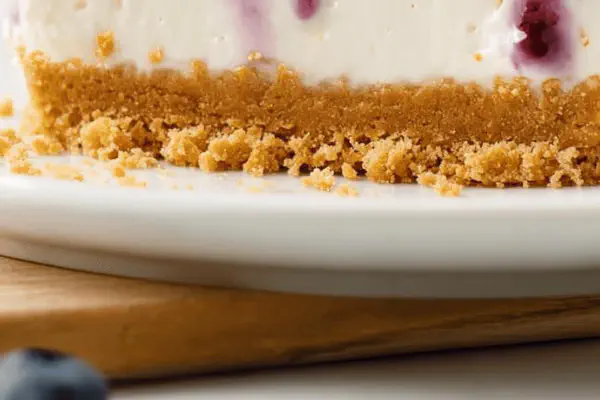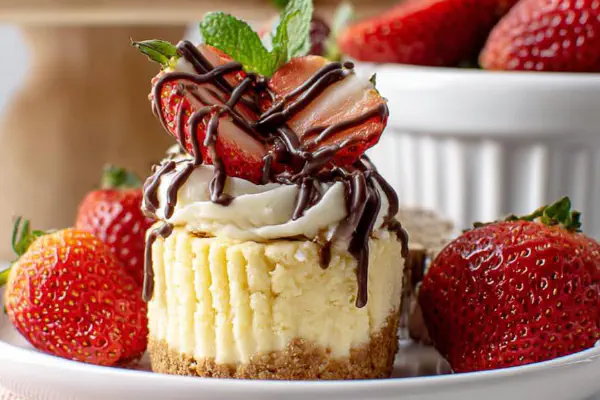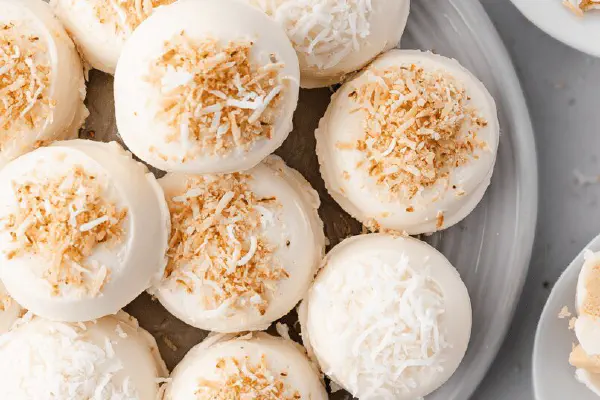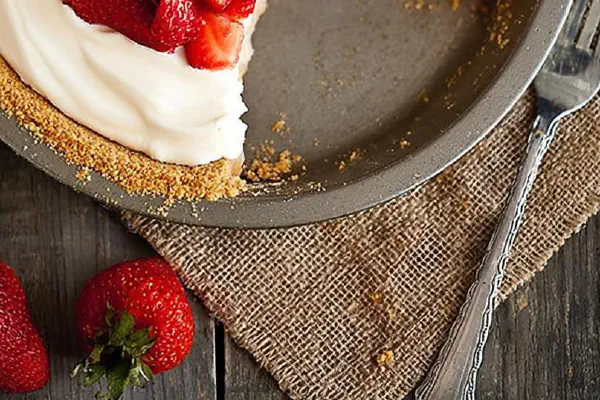No-Bake Blackberry Cheesecake Remix
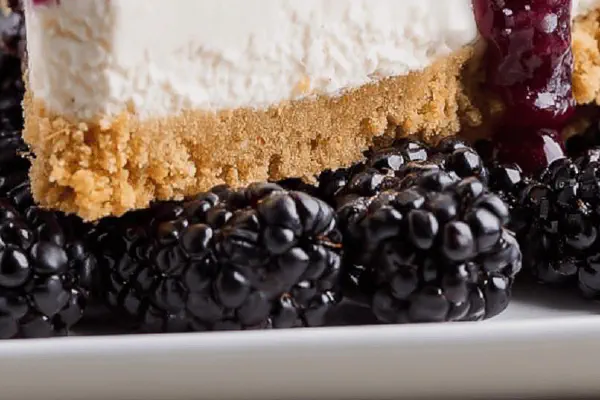
By Emma
Certified Culinary Professional
Ingredients
- 2 cups graham cracker crumbs
- 1/3 cup granulated sugar
- 7 tablespoons unsalted butter melted
- 16 ounces cream cheese softened
- 3/4 cup powdered sugar sifted
- 2 teaspoons pure vanilla extract divided
- 1 cup plain Greek yogurt (substituted for sour cream)
- 2 cups heavy whipping cream chilled
- 3 cups fresh blackberries
- 1 1/2 cups granulated sugar
- 1 1/2 teaspoons vanilla extract
- 1/4 teaspoon ground cinnamon
- 1/3 cup water
- 2 tablespoons cornstarch or arrowroot powder
About the ingredients
Method
Graham Crust
- In a mixing bowl, combine graham cracker crumbs and sugar. Microwave butter in a heatproof bowl until melted, about 20–30 seconds. Pour butter over crumb mix. Stir thoroughly until crumbs are evenly coated—notice how crumbs start to glisten, moist but crumbly, not soggy. Tip mixture into 9×13 baking dish; press firmly and evenly into bottom using bottom of glass or measuring cup. Take time here; crust must be compact for firm base. Transfer dish to freezer. Feel crust surface—should be firm to touch in 20 mins—ready for filling. Don't skip freezer step or filling will seep in later and sog the crust.
Cheesecake Filling
- In a medium bowl, beat softened cream cheese with powdered sugar, 1 teaspoon vanilla extract, and Greek yogurt. Start slow, then medium speed. Stop when smooth, no lumps; scraping sides critical to folding air in smoothly but retaining density. Chill bowl and beaters if possible for heavy cream. In separate cold bowl, whip heavy cream on high until stiff peaks form. Listen for soft whips turning to sharp snaps. Don’t overbeat or cream will turn grainy—stop at first firm peaks, shiny, holds shape but still soft to touch. Fold whipped cream gently into cream cheese mixture using spatula. Fold, don’t mix vigorously to maintain airy texture—think gentle swooping motions. Filling will thicken and lighten. Pour evenly over chilled crust. Use offset spatula to level top; surface smooth but not glassy. Return dish to fridge at least 4 hours OR freeze 1 hour longer for firmer set if in a hurry.
Blackberry Topping
- While cheesecake chills, start topping. Combine blackberries, sugar, 1/2 tsp vanilla, cinnamon, water, and cornstarch in medium saucepan. Stir constantly over medium heat. Mixture will bubble, berries will burst making popping sound; keep stirring so no sticking or burning. After 9–11 minutes (listen for slow simmer, reduce heat if rapid boil), sauce thickens to jammy consistency—coat back of spoon, clean with finger swipe. Remove from heat; cool completely to room temp. Topping should be thick but still spoonable, glossy, with small softened fruit pieces visible.
- Spread cooled topping evenly over set cheesecake. Return to fridge 30 minutes if needed for topping to meld before serving. Slice with serrated knife, wiping blade clean between cuts prevents smearing. Serve cold, store leftovers covered, recombine topping surface if separated. Blackberries can be swapped for raspberries or mixed berries—adjust sugar accordingly as raspberries tend more tart. Experiment with adding a splash of lemon juice to topping for brightness or a pinch of cardamom for subtle warmth. Greek yogurt lending slight tang here balances sweetness unlike sour cream’s heft; lighter mouthfeel, higher protein—my preferred twist.
- Avoid common mistakes: soggy crust from skipping freezer; overmixing filling collapsing air; scorch blackberry topping if not stirred; topping too runny—wait longer or add bit more cornstarch; underwhipped cream—flat filling. Keep sensory checks your best tool: touch crust firmness, watch cream texture visually and by feel, smell the fresh berry jam bubbling gently. Timing is fluid; rely on these cues, not just clock.
- A kitchen rhythm emerges: crust pressing and chilling, cream whipping while crust chills, berry simmer and cool topping prep while cheesecake sets. Multitasking saves time, but don’t rush folding or topping thickening or you’ll lose texture harmony. The mix of cold and room temp components teaches patience—the right temperature and timing create the magic.
- Serve from fridge or freezer. Freezing tightens texture, like a chilled mousse; fridge yields creamy, slightly soft bite. Both work but know your crowd. I prefer fridge for flavor clarity, freezer for summer heat. Leftovers hidden well, sometimes better next day.
- Enjoy tactile feedback throughout—crumbs firm but crumbly, cream velvety but thick, topping glossy but jammy. That’s the interplay that beats a baked version for no-effort-weeknight occasions.
Cooking tips
Chef's notes
- 💡 Crust needs freezing for firm base. Press crumbs tightly; avoid loose bits or wet spots. Butter warm but not hot—too hot melts sugar, ruins texture. I check crust firmness by gently pressing with fingertip after 20 mins, should feel solid not mushy. Skip this step and filling seeps in, soggy mess happens.
- 💡 Whip cream cold bowl, chill beaters if possible. Listen for sound shift from soft whisking to sharp snap—a good marker for stiff peaks. Overwhipping causes grainy texture, dries out mixture. Fold cream with a spatula, not fast mixing. Slow swooping motions keep air locked in, filling stays light but dense enough to hold topping.
- 💡 Blackberry topping needs constant stirring. Bubbling signals cooking but avoid rapid boil; scorch risk jumps up. After 9-11 minutes, test thickness by coating spoon back—should stick and glide smoothly. Cool completely before spreading or warm topping weeps into cream, ruins texture and appearance.
- 💡 Using Greek yogurt gives slight tang, lifts sweetness compared to sour cream heaviness. Adds protein, less fat, but blends well with cream cheese. Substitution works only if yogurt creamy, no watery parts. Otherwise filling might split, lose texture. Chilling filling well helps stability.
- 💡 Slicing chilled cheesecake with serrated knife; wipe blade clean between cuts. Prevents topping smearing, keeps slices neat. Freezing works for firmer texture but changes mouthfeel to mousse-like. Adjust prep timing based on serving preference—fridge for creamy finish, freezer for solid bites.
Common questions
How to avoid soggy crust?
Freeze crust at least 20 mins. Penetration test with fingertip. If soft, keep chilling. Butter temp matters, too hot ruins sugar coating on crumbs. Skip freezer, filling leaks in and messes crust.
Can I use sour cream instead of Greek yogurt?
Yes, but expect heavier texture less tang. Yogurt adds brightness and protein. Sour cream is denser and richer, changes creaminess. Adjust sugar a bit if needed for balance. Use full-fat versions, no watery ones.
What if topping too runny?
Keep simmering longer, stir constant. Add slight extra cornstarch mixed with water if stubborn. Don’t boil rapidly; scorches easily. Cool fully so thickens more before spreading. Warm topping melts filling, spoils set.
How to store leftovers?
Fridge sealed is safest, keeps cream smooth, topping intact. Freeze fine too but texture gains firmness, mousse-like. Can store topping separately if needed. Recombine topping if separation occurs before serving. Cover tightly to avoid fridge smells.
